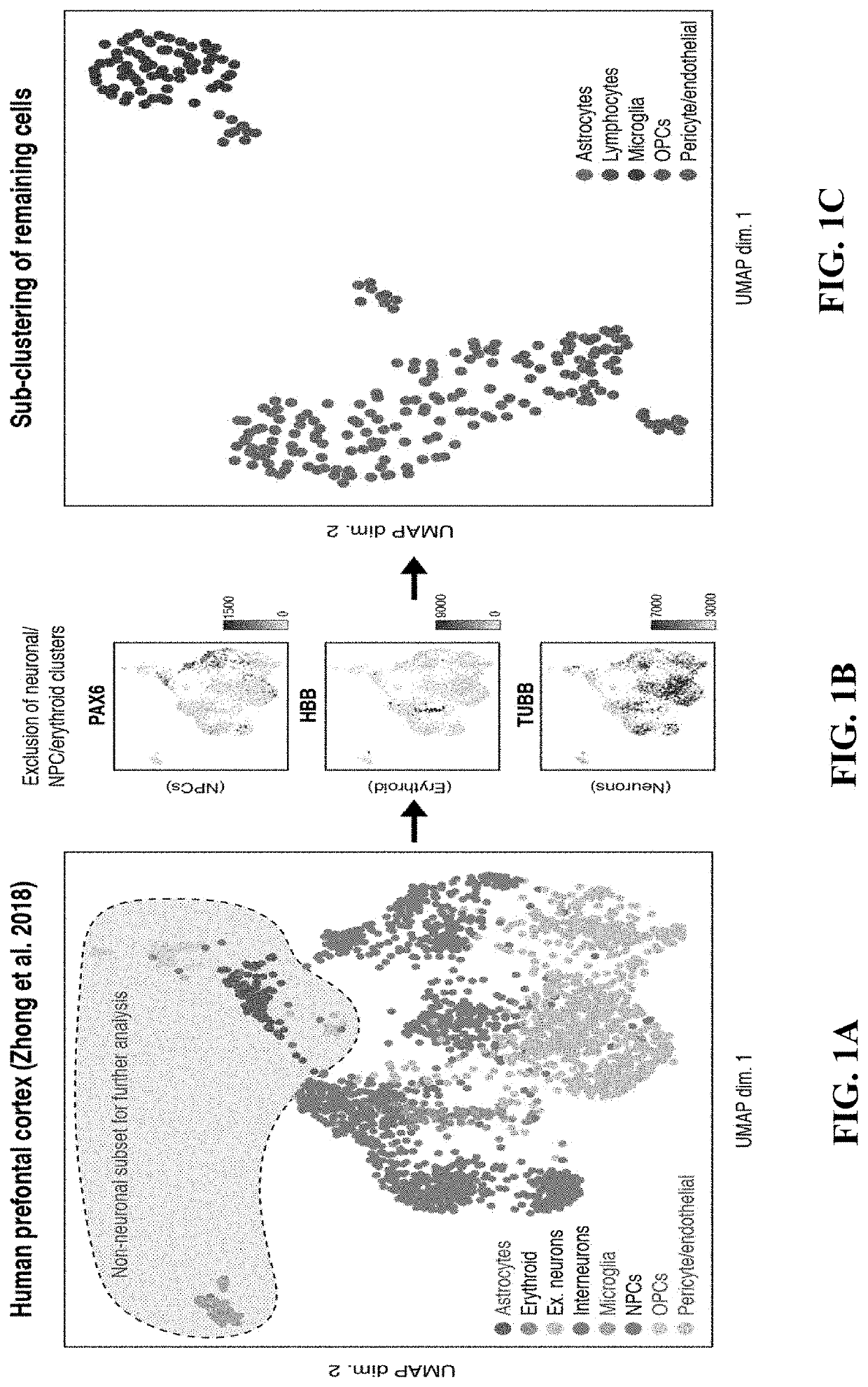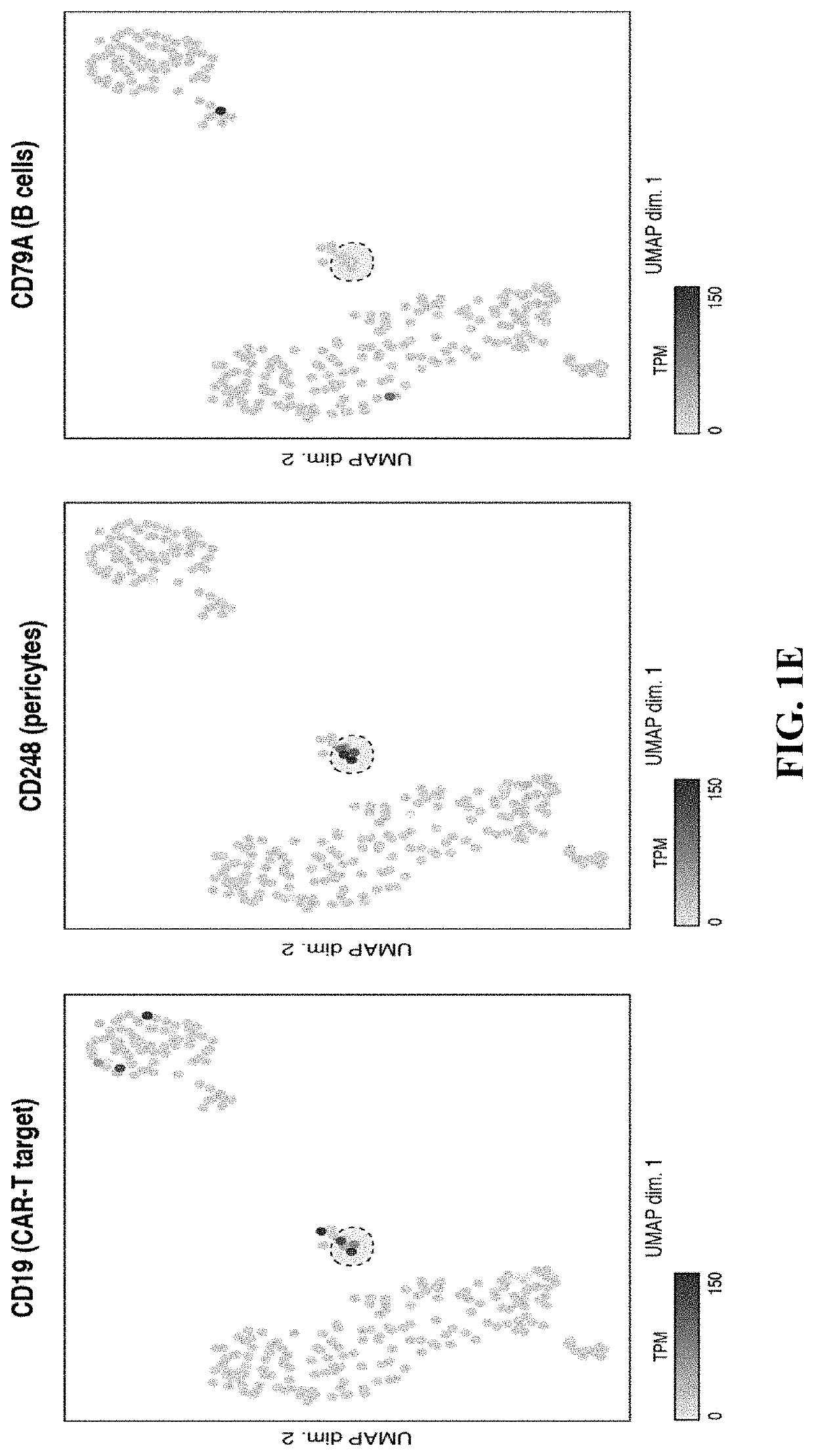Use of inhibitory chimeric receptors to prevent t cell-induced blood brain barrier damage
- Summary
- Abstract
- Description
- Claims
- Application Information
AI Technical Summary
Benefits of technology
Problems solved by technology
Method used
Image
Examples
experimental examples
[0244]The invention is further described in detail by reference to the following experimental examples. These examples are provided for purposes of illustration only, and are not intended to be limiting unless otherwise specified. Thus, the invention should in no way be construed as being limited to the following examples, but rather, should be construed to encompass any and all variations which become evident as a result of the teaching provided herein.
[0245]Without further description, one of ordinary skill in the art can, using the preceding description and the following illustrative examples, make and utilize the compounds of the present invention and practice the claimed methods. The following working examples therefore, specifically point out the preferred embodiments of the present invention, and are not to be construed as limiting in any way the remainder of the disclosure.
[0246]The materials and methods employed in Experiments 1-4 are now described.
[0247]Analysis of human b...
example 1
[0259]One possible mechanism for neurotoxicity is the unanticipated expression of CD19 on non-B cells in the brain. It was hypothesized that if such a population of CD19-expressing cells were present, it might be identifiable in data generated from recent efforts to map the human brain transcriptome with single-cell resolution. Thus, scRNA-seq data from 2,364 human prefrontal cortex cells were analyzed (Zhong, et al. 2018, Nature, 555, 524-528) (FIG. 1A). Cells were clustered and broad populations were identified, focusing subsequent analyses on non-neuronal, non-erythroid cells. These groups further segregated into astrocyte, lymphocyte, microglial, oligodendrocyte precursor, endothelial, and pericyte populations (FIG. 1B-1C). These populations were identified on the basis of the expression of canonical marker genes: pericytes specifically expressed expected marker genes, such as PDGFRB, FOXF2, RGS5, and CD248, while endothelial cells expressed a distinct set of markers, such as CD...
example 2
[0264]These results demonstrated that CD19-positive cells were present in the brain and appeared both transcriptionally and histologically as pericytes. As CD19-positive non-B cells were also present in the mouse brain, the presence of blood brain barrier disruption in mice lacking a B-cell population that would otherwise control against any blood brain barrier disruption resulting from CRS-related symptoms was assessed. CD28-based or 4-1BB-based CAR-T cells specific for either murine CD19 (1D3 scFv, mCD1928z and mCD19BBz) or human CD19 (FMC63 scFv, hCD19BBz) were generated. The hCD19BBz cells represent a negative control experimental condition, as no CD19-specific targeting would be expected in recipient mice due to the absence of strong sequence homology at the FMC63 epitope targeted by the hCD19BBz cells (FIG. 4A). CAR expression on the cell surface was confirmed (FIG. 6A) and CAR-T cell functionality was tested in vitro using flow cytometric-based cytotoxicity assays using the h...
PUM
| Property | Measurement | Unit |
|---|---|---|
| Energy | aaaaa | aaaaa |
| Length | aaaaa | aaaaa |
| Volume | aaaaa | aaaaa |
Abstract
Description
Claims
Application Information
 Login to View More
Login to View More - R&D
- Intellectual Property
- Life Sciences
- Materials
- Tech Scout
- Unparalleled Data Quality
- Higher Quality Content
- 60% Fewer Hallucinations
Browse by: Latest US Patents, China's latest patents, Technical Efficacy Thesaurus, Application Domain, Technology Topic, Popular Technical Reports.
© 2025 PatSnap. All rights reserved.Legal|Privacy policy|Modern Slavery Act Transparency Statement|Sitemap|About US| Contact US: help@patsnap.com



